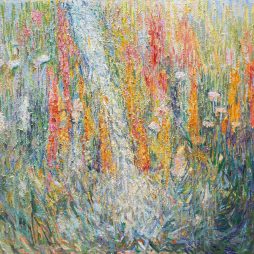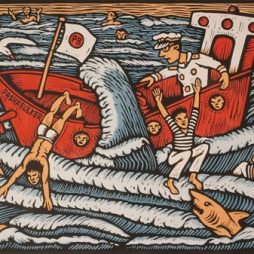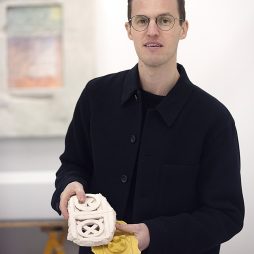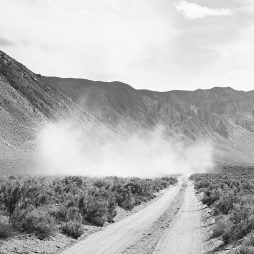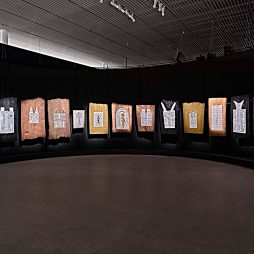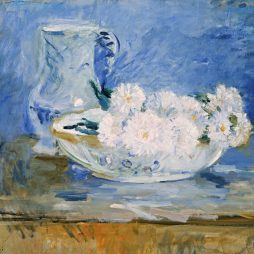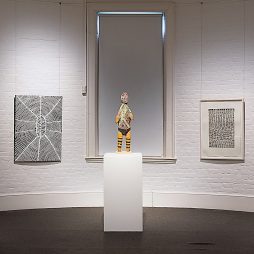REVIEW: A Meditation on Impermanence
The National Centre for Environmental Art (NCEA) is situated in the majestic Halls Gap, well-known for its natural beauty, and also its fragility and susceptibility to fire. The centre is part of a sixteen-hectare precinct that includes the Gariwerd / Grampians Gardens established in 2022 with support from the state government’s Growing Victoria’s Regional Botanic Gardens grants program and Jallukar Native Grasslands, among other programs. The NCEA and surrounding terrains, incorporating endemic gardens and wetlands are all initiatives of the Wama Foundation, previously known as the Wildlife Art Museum of Australia, established in 2012 by Glenda Lewin.
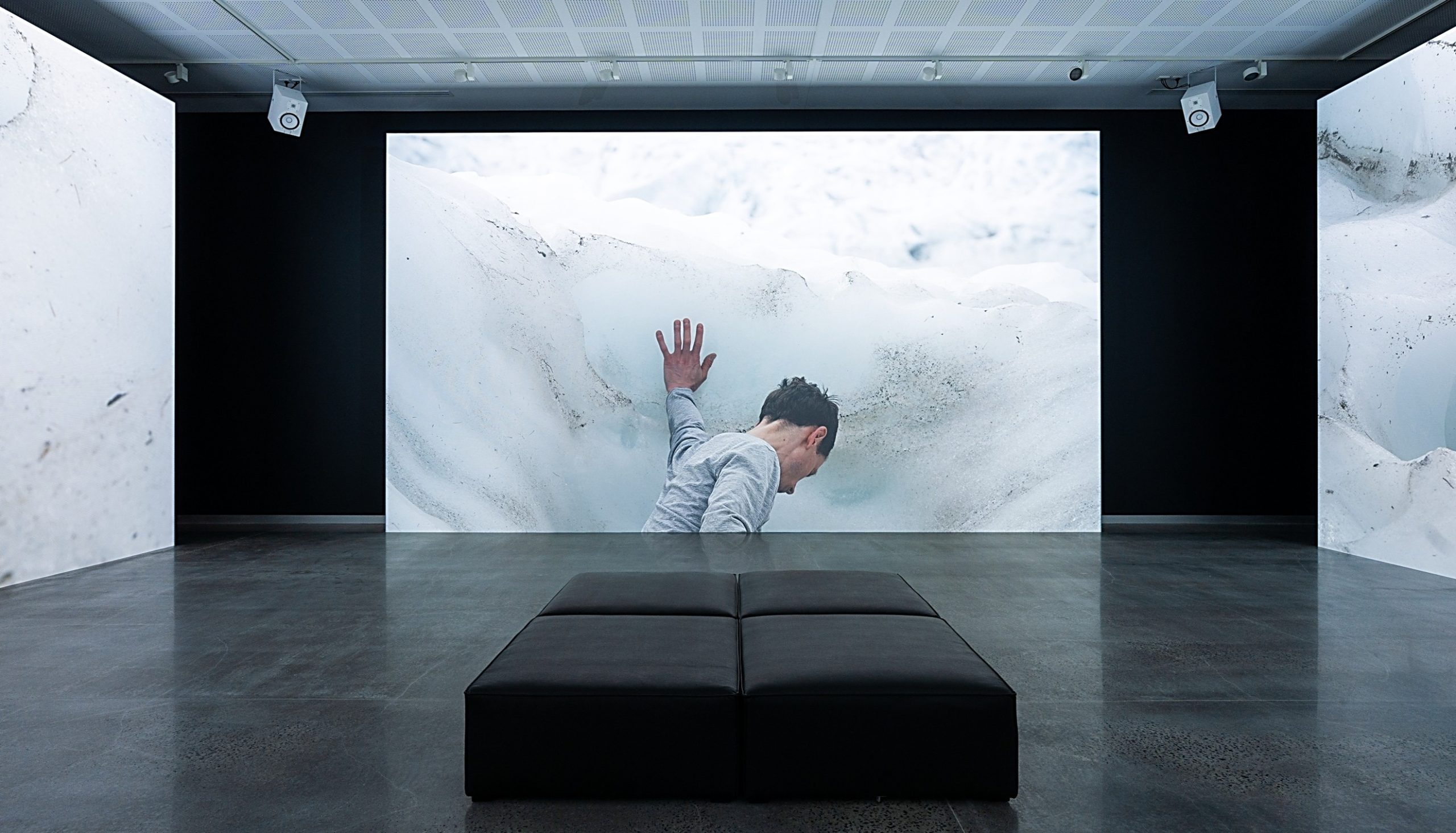
The Wama Foundation has nurtured significant momentum for its ambitious NCEA project over the past decade. In 2015 the foundation engaged Jan van Schaik, co-founder of MvS Architects, to lead the NCEA design process. In 2021 the Wama Arts Council initiated a biennial national award and acquisition prize for works on paper, the Wama Art Prize, that raised the profile of the organisation and its goals of celebrating the enduring relationship between artists and the environment. The project received a $6.75 million grant from the Victorian government’s Regional Tourism Infrastructure Fund in 2022. Under the chairmanship of Greg Lewin AM, the Board of Wama has expanded its base of members, sponsors, and philanthropic support, to achieve over $1.5 million in donations to June 2024, with a further $1.7 million pledged to ensure the timely completion of the project’s construction.
There is clearly an intention to position the NCEA as a peak tourism site within the region, but transport options are constrained. Other than the regional V/Line train service to Ararat and limited coach transfers to Halls Gap, the only way to reach the NCEA is by private vehicle. But it is early days and discussions about a bike path between Halls Gap and Pomonal, as well as extended bus services are continuing. More problematic is the opening hours of the venue, limited to Friday to Monday. Any long-term strategy to increase engagement with school curriculums would require expanded hours. These are issues that the foundation will presumably address in the stage two plans for the site and will be awaited with considerable interest as the NCEA asserts itself within the national arts ecology.
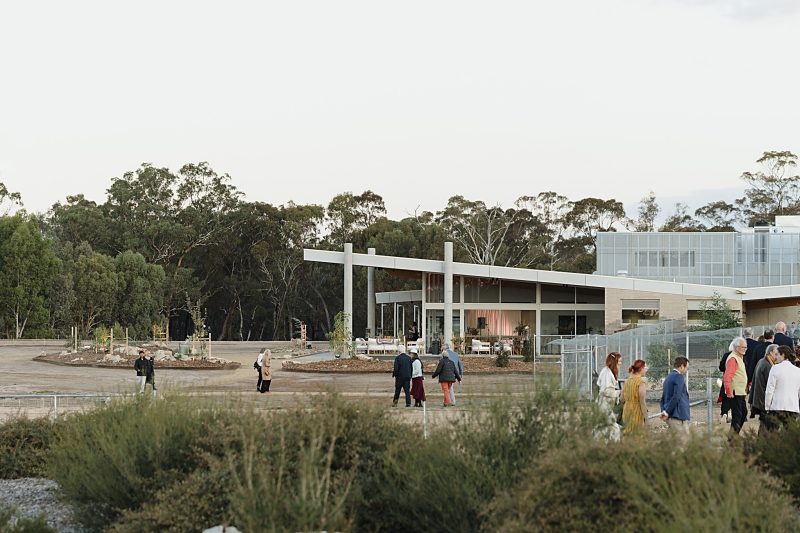
Wama Foundation Opening & Event, 2025, National Centre for Environmental Art, Halls Gap, Victoria Halls Gap. Photographed by Astrid Muller
The official opening of the NCEA on 5–6 July 2025 gave the public the opportunity to see the first stage of the $10.6 million project, including a 400-square-metre climate-controlled gallery space, multi-purpose conference centre, café, retail shop and external facilities. On entering the building, van Schaik’s technique of creating compression and release within the design becomes evident, directing the eye outwards towards the surrounding landscape. The low eave over the deck and the panoramic windows at the rear of the complex frame the view into the trees beyond. The low-hung winged roof is intended to have an almost shed-like, agrarian appearance. This human-scale, approachable quality is repeated throughout the project to offset the scale of the gallery. Hopefully, in the next stage of the building’s plans there will be other environmental efficiencies, including solar panels and provision for stormwater harvesting.
Western Australian artist Jacobus Capone was selected by inaugural CEO of the Wama Foundation, Pippa Mott, to deliver the opening programs for the NCEA. Capone’s installation, End & Being, 2025, includes a four-channel synchronized video work filmed in three locations on the Bossons Glacier situated on the north-western slope of Mont Blanc massif in the Chamonix Valley, France. End & Being was curated by José Da Silva, Director of the University of New South Wales Galleries, who worked with the artist on the exhibition Jacobus Capone: Orison, 2022. Capone’s work also coincides with the United Nations designating 2025 as the International Year of Glaciers’ Preservation.
Capone was based between the alpine communes of Vallorcine and Les Houches. He visited the glacier on foot for eighty-nine consecutive days, a rigorous pilgrimage that resulted in seventy-six days’ worth of usable footage; the remaining footage was not in focus after he developed partial snow blindness. “I see my role in this process as a participant in a collaborative work with the landscape. Holding a minute’s silence with, and amongst, this environment daily was both a form of reconciliation and lamentation. The arduous daily return journey to the glacier was an act of penance stemming from the acknowledgment that I am part of a species responsible for its demise,” Capone explains.
To reduce the environmental impact, Capone was self-sufficient, using a Sony Alpha 7S III camera with an FE 100-400 mm F4.5-5.6 GM OSS lens. The frame rate of 120fps makes the film look almost static, imbuing it with a painterly quality that surprises the viewer with sporadic hints of movement. “Being able to slow the footage down dramatically served two purposes. The first was to emphasise the lamentation that comes with watching something held dear disappear. The difficulty of letting go, of wanting to literally slow down time,” Capone observes. “It also reinforced the power of the landscape . . . being able to slowly capture large seracs falling in the background as opposed to the split-second real time happenings that the audience would miss. It allowed the power and intensity of glacial melt to be reinforced and the heat haze emanating off the glacier to become a seductive and entrancing energy.” For the foreboding soundscape, Capone employed a TASCAM Portacapture X6 Multitrack Recorder to register the ambient conditions, and worked with Perth-based sound designer Dan O’Connor.
The installation also includes the canvas sheet Capone placed beneath a section of ice at the start of his vigil; when he returned, the overhanging ice had collapsed, piercing the fabric. The exposed rock and meltwater streams mark the glacier’s retreat, the furthest point of its reach, so the work is named accordingly Terminal End, 2025. The sterling silver sculpture Everlasting, 2025, acts as something of a reliquary for pages of the 1817 poem “Mont Blanc: Lines Written in the Vale of Chamonix” by the English Romantic poet Percy Bysshe Shelley.
Capone used the text as a framing device through which to document the imperilled landscape and loss of the sublime in the intervening centuries, ritually taping the pages over his heart throughout the expedition. “Through the physicality of effort, the text was generally soaked in sweat and compressed against the chest by rucksack straps. Increasingly, I became aware that my body was literally ingesting the poem through its pores. Absorbing the sentences, the words, the spaces and the letters, as some were slowly rubbed off the paper they had been printed on,” Capone discloses. “I thought a lot about the sentiment and feeling with which the poem might have been composed . . . hoping that somehow this intent would circulate through my own body, and in turn affect how I sensed and moved through the landscape . . . now radically altered from the state in which Shelley experienced it.”
Although Capone is only intermittently visible in End & Being, usually seen in an obeisant posture, face averted, this is a deeply felt public expiation. His ritual of bearing witness, unflinchingly present, conveys a palpable sense of grief that envelops the viewer. “The human figure presented in the work is in an incredibly vulnerable and passive position. Ultimately at the mercy of this landscape, yet poignantly a stain on it. . . . I wanted it to be difficult and felt I needed to earn the right to spend time with the glacier each day,” Capone stresses. “Revisiting the footage during the editing process inflicted its own trauma as I was able to see what was happening in the background that I wasn’t aware of at the time of shooting.”
Further to Wama’s commitment to local artists and community, the NCEA also presented three new works from multi-disciplinary artist and proud Wadawurrung woman, Deanne Gilson, in her exhibition Yin Yin Yonbarra—Song Birds, 2025.
In September, the aptly named site-specific earthwork, Spring, 2025, will be launched. A collaboration between artist Jemila MacEwan and her father Richard, a retired soil scientist, Spring incorporates a large ring of native grasses growing up through nutrient-depleted and denuded ground, fed by a hidden circular copper irrigation pipe. Over time, Spring will continue as a community care project, and possibly a focus for school students. Conceivably, it supports the evolution of Wama Foundation as a venue and surrounds that promotes dialogue about environmental and climate factors, including landcare and sustainability, as issues central to the NCEA’s policies and focus on audience engagement.
EXHIBITIONS:
Jacobus Capone: End & Being
5 July – 4 November 2025
Jemima MacEwan: Spring
1 September 2025 –
National Centre for Environmental Art, Victoria
Images courtesy of the artist,Moore Contemporary, Perth, Wama Foundation-National Centre for Environmental Art, Victoria, UNSW Galleries, Sydney
Inga Walton is a writer and visual arts consultant based in Melbourne
This article was first published in Artist Profile Issue 72

